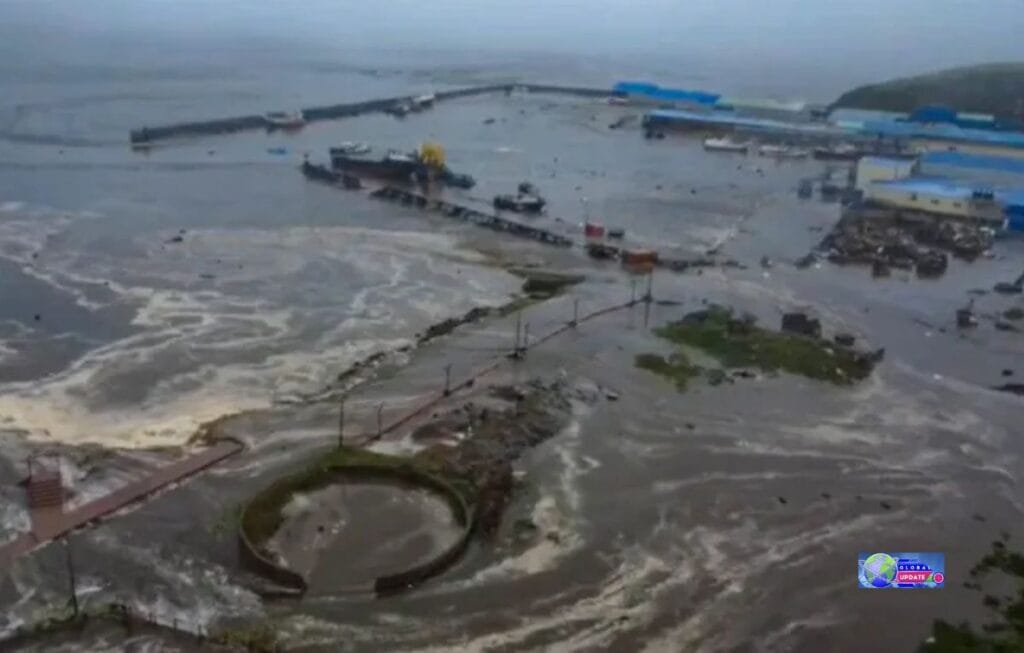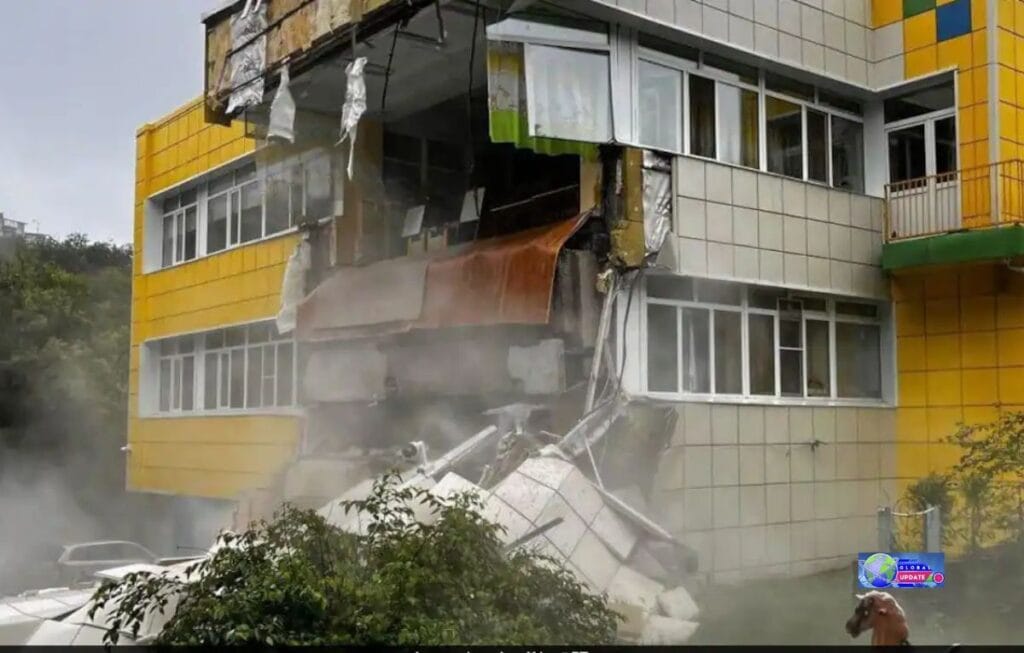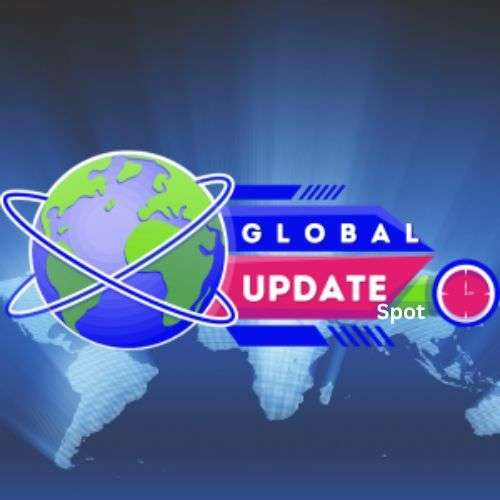July 29, 2025— A powerful magnitude 8.8 earthquake struck just off the coast of Russia’s Kamchatka Peninsula early Tuesday morning, generating tsunami waves that later reached Hawaii and parts of the US West Coast.
The seismic event, one of the strongest to hit the region in decades, triggered widespread alerts and emergency evacuations across the Pacific Rim.
The Earthquake: A Massive Seafloor Shift
The 8.8-magnitude undersea earthquake occurred at approximately 3:14 a.m. local time near the Kuril-Kamchatka Trench, a known seismic hotspot where the Pacific Plate subducts beneath the Okhotsk Plate.
According to the United States Geological Survey (USGS), the quake originated at a depth of 25 kilometers, a relatively shallow point that increased the potential for tsunami generation.

Tsunami Waves Confirmed in the Pacific
The Pacific Tsunami Warning Centre (PTWC) quickly issued warnings after detecting tsunami wave activity travelling across the Pacific Ocean basin. As forecasted, the tsunami waves eventually made landfall in
- Hilo, Hawaii: Waves up to 1.5 meters (5 feet) surged ashore, flooding parts of the low-lying harbor and beachfront roads. Residents evacuated several hours earlier, minimizing risk.
- Santa Cruz, California: Tsunami waves reached heights of 0.8 to 1.2 meters, causing minor flooding in harbor areas and damaging several docked boats.
- Newport, Oregon, and Long Beach, Washington: Waves of under 1 meter observed, but precautionary evacuations still enforced.
- Alaska’s Aleutian Islands: Closer to the quake’s epicenter, waves reached 2 meters in some areas, with brief power outages and minor structural damage reported.
Despite fears of a full-scale disaster, the tsunami did not develop into a catastrophic event similar to those in 2004 or 2011, due in part to the earthquake’s offshore location and the ocean’s capacity to disperse wave energy.

Evacuations and Emergency Measures
In Hawaii, loud tsunami sirens activated across islands like Oahu, Maui, and the Big Island. Tourists and residents in beach zones urged to evacuate to higher ground overnight. Schools, ports, and coastal roads temporarily closed, and shelters were opened.
In California, emergency management teams set up coastal barricades, and the National Weather Service (NWS) issued alerts instructing people to stay off beaches, piers, and marinas. Similar measures taken in Oregon and Washington.
“We were bracing for the worst,” said Brian Tanaka, a resident of Hilo. “But thanks to early warnings, everyone prepared. The waves came in fast, but we stayed safe.”
Russia’s Immediate Impact
In the Kamchatka Peninsula, closest to the epicenter, strong shaking reported across major towns, including Petropavlovsk-Kamchatsky.
Russian authorities declared a state of emergency, evacuated dozens of coastal villages, and launched rapid response teams to assess the damage. So far, no significant injuries or fatalities have reported, though infrastructure assessments are ongoing.
The Russian Ministry of Emergency Situations (EMERCOM) reported some shoreline damage due to the waves and localized landslides triggered by aftershocks.
Scientific Context and Reactions
According to Dr. Helen Rojas, a seismologist at the NOAA Tsunami Research Center, the earthquake’s magnitude and location were ideal for a Pacific-wide tsunami.
“The rupture along the Kuril-Kamchatka subduction zone is one of the most tectonically active areas in the world. Today’s event demonstrates how energy released at sea can move across vast ocean distances in hours.”
Scientists confirmed that the quake triggered seafloor displacement—the primary cause of tsunami wave formation—and that wave speeds exceeded 500 mph (800 km/h) across the open ocean.
Global Monitoring Systems in Action
This event represented a major achievement for the international tsunami early-warning system, involving coordination between agencies in the US, Japan, Russia, New Zealand, and Australia. Alerts delivered within minutes, and millions received real-time notifications via mobile phones, radio, and TV broadcasts.
Aftershocks and Ongoing Alerts
Multiple aftershocks above magnitude 6.0 have been recorded in the region since the initial quake. Seismologists warn that more tremors are likely in the coming days, and coastal residents are advised to remain alert.
The PTWC since downgraded the tsunami alert status, stating that the waves have dissipated mainly and that no further large waves expected. However, residual ocean currents and minor sea level changes may persist for several hours.
Nature’s Reminder and the Importance of Preparedness
Tuesday’s massive earthquake and the resulting tsunami waves serve as a powerful reminder of the dynamic forces beneath the Earth’s crust.
Despite the scale of the quake, the combination of modern science, early warning systems, and community preparedness helped prevent a major tragedy.
As climate change and urban development continue to affect coastal populations, experts stress the importance of disaster readiness, infrastructure resilience, and public education.
“We can’t stop tectonic plates from moving,” said NOAA’s Dr. Rojas, “but we can be ready. And today, that readiness saved lives.”
Tsunami Warnings in the US Downgraded After Massive Quake Strikes Russia’s Far East
July 30, 2025— A powerful earthquake struck the Far East region of Russia early Tuesday, triggering initial tsunami warnings across parts of the Pacific Rim, including the western coastline of the United States.
However, within hours, officials downgraded the alert after confirming that no significant tsunami threat would reach US shores.

The Earthquake
According to the United States Geological Survey (USGS), the undersea earthquake registered a magnitude of 7.8, shaking the Kamchatka Peninsula, a remote but seismically active area.
The quake occurred at a depth of around 30 kilometers beneath the ocean floor, and aftershocks felt throughout the Russian Far East and into the nearby Aleutian Islands of Alaska.
Local authorities in Russia activated emergency protocols, although no immediate reports of widespread damage or casualties were confirmed. Experts note that the Kamchatka region sits along the Pacific “Ring of Fire,” a hotbed for volcanic activity and tectonic movement.
Tsunami Alerts Issued—and Then Downgraded
Shortly after the quake, the Pacific Tsunami Warning Center (PTWC) issued tsunami advisories for coastal areas of Alaska, Hawaii, and parts of the US West Coast as a precautionary measure. Communities in coastal regions were urged to stay away from the shorelines and harbors.
By midday, however, the PTWC confirmed that the wave modeling data showed minimal wave activity moving toward the US mainland. In an official statement, they noted:
“Tsunami waves observed near the epicenter were under threat thresholds.” As a result, advisories for the United States have been canceled or downgraded.”
In places such as Kodiak, Alaska, and Dutch Harbor, authorities observed wave surges measuring less than 0.3 meters, which is well below the danger mark.
Preparedness Paid Off
Emergency officials credited the rapid alert systems and the coordinated communication among the National Oceanic and Atmospheric Administration (NOAA), local governments, and international seismological centers for preventing panic.
Residents along the West Coast, including parts of California, Oregon, and Washington, expressed concern but praised how quickly updates were delivered.
“I got an alert right after the quake hit Russia. It was comforting to know what was happening in real-time,” said Linda Martinez, a teacher in Santa Cruz, California.
Russia’s Emergency Response
In Russia, the Ministry of Emergency Situations (EMERCOM) sent reconnaissance teams to assess damages in Petropavlovsk-Kamchatsky and surrounding villages. Local TV footage showed residents briefly evacuating to higher ground as tsunami sirens rang out, but they were later cleared to return home safely.
Officials continue to monitor the region for aftershocks, which are common following a significant seismic event of this scale.
What Experts Say
According to Dr. Elena Korotkova, a Russian geophysicist specializing in plate tectonics:
“Kamchatka lies on a collision boundary between the Pacific Plate and the Okhotsk Plate. These quakes are not rare, but this one was larger than average. Fortunately, it did not release energy in a way that generated a major tsunami.”
In the US, NOAA seismologist James Weller explained that the curvature of the ocean floor between Russia and the US West Coast significantly diffused the wave strength.
“It’s a reminder of how dynamic our planet is and why earthquake monitoring and tsunami preparedness crucial,” he said.
No Cause for Alarm, But Stay Alert
Although the situation no longer poses a threat, authorities urge residents in coastal areas to stay informed through official channels such as
- NOAA’s Tsunami Warning Centre
- National Weather Service (NWS)
- Emergency Alert Systems (EAS)
They also recommend reviewing evacuation routes and emergency kits and remaining vigilant for possible aftershocks in both Russian and US territories.
Conclusion
While the massive earthquake in Russia’s Far East a sobering reminder of nature’s unpredictability, global coordination, fast data modeling, and efficient emergency responses ensured that panic avoided and lives protected.
The downgraded tsunami alerts provided relief to millions, demonstrating the value of modern disaster preparedness in our interconnected world.



